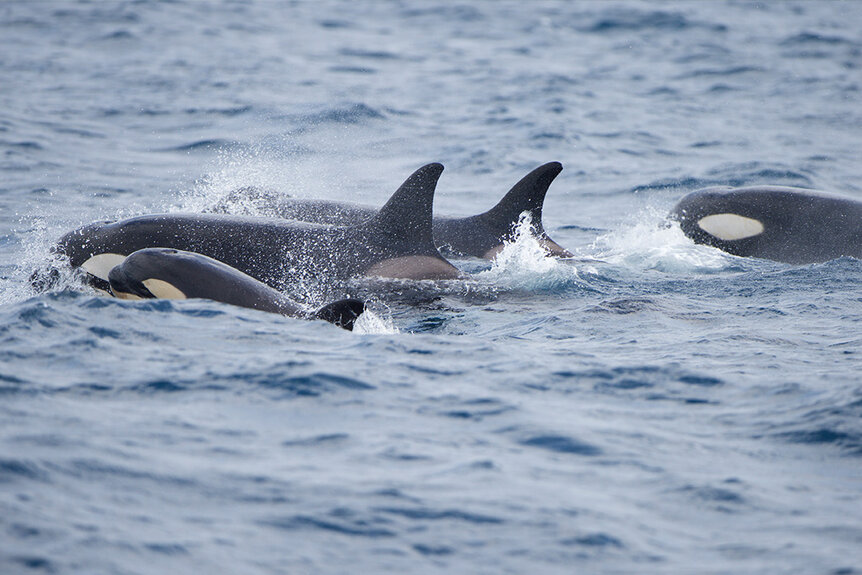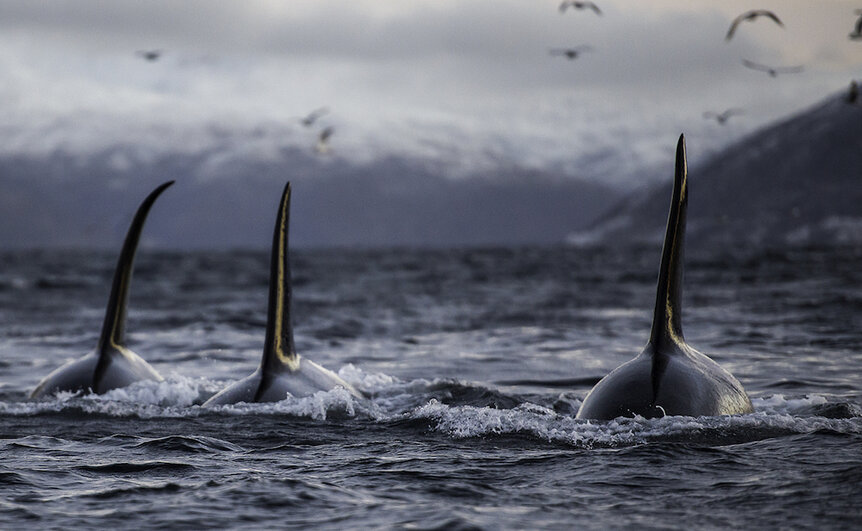Create a free profile to get unlimited access to exclusive videos, sweepstakes, and more!
Killer Whales Turn the Tide and Start Hunting Boats
It might be revenge for a "critical moment of agony."

Forget Jaws! This summer, killer whales might be the reason not to go back into the water. On May 4, three orcas sunk a boat in the Straight of Gibraltar, it was the third documented case of orcas sinking boats in the last three years.
“It is a rare behavior that has only been detected in this part of the world,” said Atlantic Orca Working Group (GTOA) researcher Alfredo López, to Scientific American.
SOCIAL TRENDS AMONG ORCAS
Despite their name, killer whales are actually a type of dolphin, and they’re about as smart as their more beloved bottlenose relatives. That intelligence grants them the ability to learn, develop new behaviors, and share those behaviors with their friends.
RELATED: Orca-nized Crime Is On The Rise As Killer Whales Teach One Another To Steal Fish
In 1987, an orca began wearing a dead salmon on his head like a hat. Over the next several months, the trend spread throughout the population. Everyone was wearing salmon hats, then the trend died out. Scientists observing the behavior were at a loss to come up with an explanation other than that it was a fun thing to do. It seems that trends arise and propagate among killer whales in ways which are similar to trends among humans. Dead fish hats might be the juvenile equivalent of drawing that stylized “S” we all drew in grade school. You do it because everyone else is doing it and because it’s cool.
More recently, a subpopulation of orcas near the Crozet Islands have learned to recognize fishing vessels and steal catches from longlines trailing in the water. That, too, appeared to be a learned behavior that likely started with a single individual before spreading.
Attacking boats directly might be another of these behavioral quirks, something one orca figured out and then shared with its friends. Some researchers monitoring orca populations in the area, however, have suggested an alternate explanation involving tragedy and vengeance.
TURNING THE TIDE ON BOATS
The first recorded instance of an orca attacking a boat occurred in May 2020, in an area with heavy boat traffic. Since then, 505 cases have been recorded, during which an orca interacted with a boat. Not all of these are attacks, most times the orcas approach and then leave.
In a subset of cases, the killer whales make contact with a boat, and in about one fifth of those instances, the boat is damaged badly enough to be disabled. Orcas attack boat rudders preferentially, according to researchers, and even scrape their teeth against the hulls of boats. The first sinking occurred in July 2022, when a trio of juvenile orcas downed a sailboat carrying five people. In December of the same year, they sank another sailboat carrying four. The most recent attack took down a sailing yacht. In every case, the passengers were recovered from the water safely. The boats weren’t as lucky, they either sank on the spot or were submerged while being towed to shore.
According to observers, the attacks are being carried out by two groups of killer whales. In addition to the previously mentioned group of adolescents, another mixed-age group made up of an adult female called White Gladis, two of her offspring, and two of her sisters is also on the hunt for boats.
The ship-sinking youth group isn’t horribly surprising. Social trends among orcas are typically driven by juveniles, but the involvement of White Gladis is a little more unusual, causing some to speculate that at least some of the attacks are motivated by revenge for a previous slight. Killer whales in the area regularly have injuries consistent with boat collisions or entanglements with fishing lines. It’s possible Gladis has it out for boats after what Lopez described as a “critical moment of agony,” via Live Science.
Certainly, there is a long history between humans and orcas, most of which casts us as the villains in their story. We’ve hunted them for food and for sport, and we’ve captured them or their babies for our own amusement. Orcas may not know exactly what we’re up to, but they’re smart enough to associate boats with bad news and they’re sharp enough to know they can knock things into the water. Killer whales in other parts of the world have been seen working together to create artificial waves, knock seals into the water, and eat them.
That Iberian orcas are sinking boats but leaving the passengers alone could suggest that they don’t recognize humans as the true agents of their suffering. Maybe they do know and they’re happy to send a message without spilling blood.
“All this has to make us reflect on the fact that human activities, even in an indirect way, are at the origin of this behavior,” López said.
Of course, it is dangerous to ascribe human motivations to non-human behavior. Orcas might harbor no malice toward us at all, even if we might deserve it, and they’re just having a good time sinking boats for the vibes.
At least when Jaws attacks, you know what its motivations are. Catch the entire Jaws saga, available from Universal Pictures.




























